The Abdominoperineal Resection Cost in India approximately starts from INR 540475 (USD 6500)
Abdominoperineal resection is a surgery that includes the removal of the anus, and a part of the sigmoid colon through the help of incision made in the abdomen and the perineum. The procedure is performed when the lymph nodes that contain cancer are situated very low close to the sphincter muscles, near to the anus. Rectum and lymph nodes also get removed. A colostomy is performed by forming a new opening in the abdomen for the bowel, as the end of the sigmoid colon is brought out permanently on the surface of the skin, called a Stoma. It is then attached to a plastic bag for collecting waste.
As the medical sector is evolving at a fast rate in India with all the latest medical advancements and technology, it is safe to say that India is now becoming one of the major medical tourists’ attractions across the globe. Among all the popular destinations for world-class medical facilities, India has the most number of clinics and skilled doctors to perform Abdominoperineal resection.
| Country | Cost | Local_currency |
|---|---|---|
| Czechia | USD 13500 | Czechia 306315 |
| Greece | USD 37500 | Greece 34500 |
| India | USD 6500 | India 540475 |
| Israel | USD 30000 | Israel 114000 |
| Lebanon | USD 37500 | Lebanon 562708125 |
| South Korea | USD 32000 | South Korea 42966080 |
| Switzerland | USD 37500 | Switzerland 32250 |
| Thailand | USD 15000 | Thailand 534750 |
| Tunisia | USD 35000 | Tunisia 108850 |
| Turkey | USD 9000 | Turkey 271260 |
| United Arab Emirates | USD 15000 | United Arab Emirates 55050 |
| United Kingdom | USD 35000 | United Kingdom 27650 |
Treatment cost
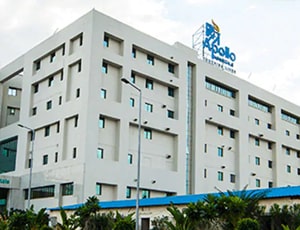
Types of Abdominoperineal Resection in Apollo Hospital and its associated cost
| Treatment Option | Approximate Cost Range (USD) | Approximate Cost Range (INR) |
|---|---|---|
| Abdominoperineal Resection (Overall) | 8854 - 13372 | 737760 - 1086771 |
| Standard Abdominoperineal Resection | 6633 - 11284 | 561317 - 907165 |
| Laparoscopic Abdominoperineal Resection | 8912 - 13274 | 732390 - 1088494 |
| Robotic Abdominoperineal Resection | 9091 - 16659 | 734861 - 1388352 |
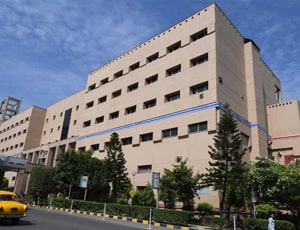
Types of Abdominoperineal Resection in Apollo Multispecialty Hospitals and its associated cost
| Treatment Option | Approximate Cost Range (USD) | Approximate Cost Range (INR) |
|---|---|---|
| Abdominoperineal Resection (Overall) | 9112 - 13522 | 748216 - 1085246 |
| Standard Abdominoperineal Resection | 6789 - 11381 | 555961 - 933780 |
| Laparoscopic Abdominoperineal Resection | 8872 - 13420 | 735545 - 1116771 |
| Robotic Abdominoperineal Resection | 8888 - 17037 | 753932 - 1353439 |
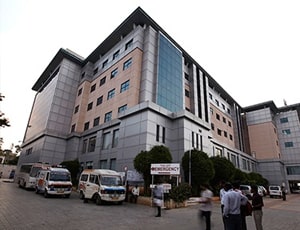
Types of Abdominoperineal Resection in BGS Gleneagles Global Hospitals and its associated cost
| Treatment Option | Approximate Cost Range (USD) | Approximate Cost Range (INR) |
|---|---|---|
| Abdominoperineal Resection (Overall) | 8925 - 13533 | 751070 - 1121233 |
| Standard Abdominoperineal Resection | 6606 - 11446 | 546316 - 942877 |
| Laparoscopic Abdominoperineal Resection | 9087 - 13627 | 724782 - 1083126 |
| Robotic Abdominoperineal Resection | 8816 - 16618 | 748205 - 1412772 |

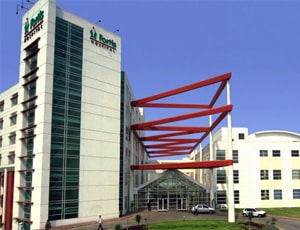
Types of Abdominoperineal Resection in Fortis Hospital and its associated cost
| Treatment Option | Approximate Cost Range (USD) | Approximate Cost Range (INR) |
|---|---|---|
| Abdominoperineal Resection (Overall) | 8157 - 12158 | 667418 - 1001144 |
| Standard Abdominoperineal Resection | 6063 - 10163 | 501476 - 831176 |
| Laparoscopic Abdominoperineal Resection | 8129 - 12148 | 666576 - 1000762 |
| Robotic Abdominoperineal Resection | 8106 - 15255 | 667547 - 1254278 |
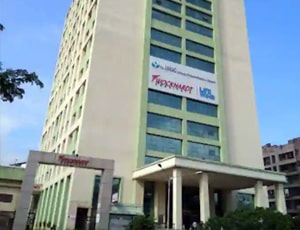
Types of Abdominoperineal Resection in Wockhardt Hospital, Umrao and its associated cost
| Treatment Option | Approximate Cost Range (USD) | Approximate Cost Range (INR) |
|---|---|---|
| Abdominoperineal Resection (Overall) | 8142 - 12182 | 663061 - 993951 |
| Standard Abdominoperineal Resection | 6106 - 10147 | 501251 - 829167 |
| Laparoscopic Abdominoperineal Resection | 8148 - 12193 | 667877 - 1001428 |
| Robotic Abdominoperineal Resection | 8108 - 15282 | 669052 - 1247743 |
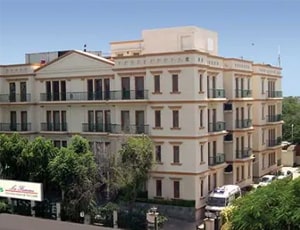
Types of Abdominoperineal Resection in Fortis La Femme, Greater Kailash II and its associated cost
| Treatment Option | Approximate Cost Range (USD) | Approximate Cost Range (INR) |
|---|---|---|
| Abdominoperineal Resection (Overall) | 8083 - 12198 | 664239 - 1000693 |
| Standard Abdominoperineal Resection | 6093 - 10109 | 498457 - 828597 |
| Laparoscopic Abdominoperineal Resection | 8107 - 12143 | 664489 - 996450 |
| Robotic Abdominoperineal Resection | 8128 - 15242 | 665498 - 1250934 |
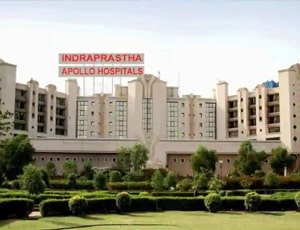
Types of Abdominoperineal Resection in Indraprastha Apollo Hospital and its associated cost
| Treatment Option | Approximate Cost Range (USD) | Approximate Cost Range (INR) |
|---|---|---|
| Abdominoperineal Resection (Overall) | 9158 - 13226 | 751819 - 1099289 |
| Standard Abdominoperineal Resection | 6820 - 11197 | 562044 - 920521 |
| Laparoscopic Abdominoperineal Resection | 8828 - 13325 | 726946 - 1108828 |
| Robotic Abdominoperineal Resection | 9139 - 17162 | 740906 - 1360516 |
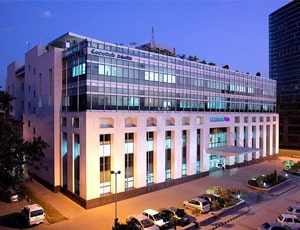
Types of Abdominoperineal Resection in Manipal Hospital, Yeshwantpur and its associated cost
| Treatment Option | Approximate Cost Range (USD) | Approximate Cost Range (INR) |
|---|---|---|
| Abdominoperineal Resection (Overall) | 8850 - 13367 | 734777 - 1114335 |
| Standard Abdominoperineal Resection | 6696 - 11150 | 554706 - 923279 |
| Laparoscopic Abdominoperineal Resection | 8970 - 13304 | 724323 - 1085078 |
| Robotic Abdominoperineal Resection | 9040 - 16617 | 722608 - 1358942 |

Types of Abdominoperineal Resection in Shanti Mukand Hospital and its associated cost
| Treatment Option | Approximate Cost Range (USD) | Approximate Cost Range (INR) |
|---|---|---|
| Abdominoperineal Resection (Overall) | 8129 - 12146 | 668383 - 1001574 |
| Standard Abdominoperineal Resection | 6099 - 10104 | 500451 - 833215 |
| Laparoscopic Abdominoperineal Resection | 8083 - 12211 | 667909 - 1002760 |
| Robotic Abdominoperineal Resection | 8099 - 15156 | 664713 - 1249713 |
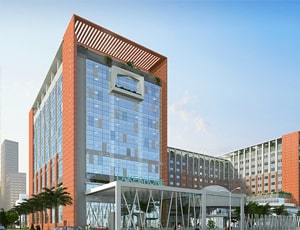
Types of Abdominoperineal Resection in VPS Lakeshore Hospital and its associated cost
| Treatment Option | Approximate Cost Range (USD) | Approximate Cost Range (INR) |
|---|---|---|
| Abdominoperineal Resection (Overall) | 8091 - 12216 | 666301 - 1001152 |
| Standard Abdominoperineal Resection | 6119 - 10150 | 497504 - 833459 |
| Laparoscopic Abdominoperineal Resection | 8088 - 12190 | 663162 - 996798 |
| Robotic Abdominoperineal Resection | 8159 - 15257 | 667940 - 1251891 |
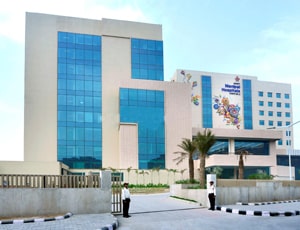
Types of Abdominoperineal Resection in Manipal Hospital, Dwarka and its associated cost
| Treatment Option | Approximate Cost Range (USD) | Approximate Cost Range (INR) |
|---|---|---|
| Abdominoperineal Resection (Overall) | 8133 - 12148 | 668451 - 997582 |
| Standard Abdominoperineal Resection | 6101 - 10160 | 497426 - 831398 |
| Laparoscopic Abdominoperineal Resection | 8127 - 12199 | 666220 - 994488 |
| Robotic Abdominoperineal Resection | 8143 - 15280 | 665583 - 1250357 |

Types of Abdominoperineal Resection in Dr. Rela Institute and Medical Centre and its associated cost
| Treatment Option | Approximate Cost Range (USD) | Approximate Cost Range (INR) |
|---|---|---|
| Abdominoperineal Resection (Overall) | 8858 - 13351 | 751688 - 1112400 |
| Standard Abdominoperineal Resection | 6749 - 11049 | 552937 - 928437 |
| Laparoscopic Abdominoperineal Resection | 8900 - 13202 | 733502 - 1127879 |
| Robotic Abdominoperineal Resection | 8973 - 16919 | 734227 - 1359133 |
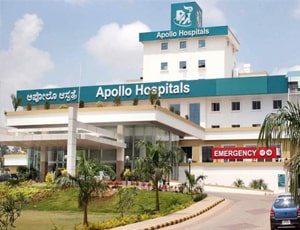
Types of Abdominoperineal Resection in Apollo Hospitals Bannerghatta and its associated cost
| Treatment Option | Approximate Cost Range (USD) | Approximate Cost Range (INR) |
|---|---|---|
| Abdominoperineal Resection (Overall) | 9138 - 13319 | 729358 - 1106297 |
| Standard Abdominoperineal Resection | 6837 - 11345 | 553070 - 906871 |
| Laparoscopic Abdominoperineal Resection | 9157 - 13277 | 743480 - 1121367 |
| Robotic Abdominoperineal Resection | 8886 - 16902 | 721974 - 1391992 |
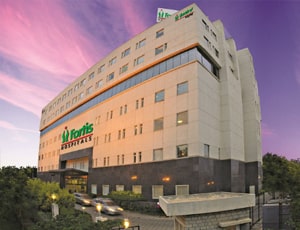
Types of Abdominoperineal Resection in Fortis Hospital and its associated cost
| Treatment Option | Approximate Cost Range (USD) | Approximate Cost Range (INR) |
|---|---|---|
| Abdominoperineal Resection (Overall) | 8127 - 12144 | 667433 - 997976 |
| Standard Abdominoperineal Resection | 6076 - 10186 | 498388 - 828855 |
| Laparoscopic Abdominoperineal Resection | 8118 - 12219 | 668972 - 994624 |
| Robotic Abdominoperineal Resection | 8115 - 15278 | 667003 - 1252147 |
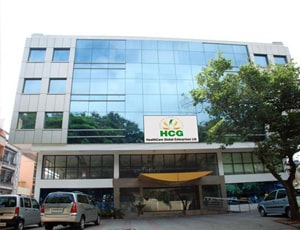
Types of Abdominoperineal Resection in HCG Kalinga Rao Road and its associated cost
| Treatment Option | Approximate Cost Range (USD) | Approximate Cost Range (INR) |
|---|---|---|
| Abdominoperineal Resection (Overall) | 8114 - 12166 | 666128 - 998704 |
| Standard Abdominoperineal Resection | 6085 - 10133 | 499034 - 832863 |
| Laparoscopic Abdominoperineal Resection | 8097 - 12183 | 665392 - 1003523 |
| Robotic Abdominoperineal Resection | 8093 - 15243 | 664177 - 1252950 |
Abdominoperineal resection (APR) is a type of a surgery in which the anus, rectum, and sigmoid colon are removed through small cuts in the belly. It is a surgical procedure done primarily to remove the cancer of the rectum. Typically, abdominoperineal resection (AP) is conducted as an elective procedure. This procedure is most often used to treat rectum cancer if it is located very low in the rectum or in the anus, close to the sphincter muscles.
Nowadays, advanced surgical techniques and other treatment modalities have brought an increase in the rate of sphincter-sparing operations. However, APR surgery is still necessary in selected cases, especially if the patient has distal tumors or poor sphincter function. AP resection is a major operation. During perineal resection, the rectum, distal colon, and anal sphincter complex are completely removed using both anterior abdominal and perineal incisions. Once the anus and rectum are removed, a permanent colostomy is needed to complete the procedure.
Colostomy brings the colon to an opening at the surface of the skin, which allows the waste to pass out of the body. This new opening is called stoma and usually measures from one to one-and-a-half inches in diameter. A pouch, or a stoma appliance, is needed to be worn at all times. The stoma has no sphincter muscles, so there is no conscious control over the elimination of waste products from the body after the procedure.
Recovery of the patient depends on individual circumstances and general health of the patient. A patient may be required to stay in the hospital for three to seven days. However, some patients may need more time to recover.
You can walk and stand on the first day after AP resection and resume most of the usual activities shortly after the surgery. In fact, increased activity reduces the risk of blood clots and also improves breathing. A physical therapist will often visit you during your hospital stay and will help regain your strength after the surgery. After getting discharged from the hospital, avoid lifting more than 5 to 10 pounds for 4 weeks, as this allows the incisions to heal. It also decreases the risk of developing a hernia.
Ask your healthcare adviser for the best multiple options and choose the one that meets your expectations
On an average, Abdominoperineal Resection in India costs about $6500. Abdominoperineal Resection in India is available across many hospitals in different states.
The cost of Abdominoperineal Resection in India may differ from one medical facility to the other. The cost quoted by some of the best hospitals for Abdominoperineal Resection in India generally covers the pre-surgery investigations of the patient. The treatment cost usually includes the expenses related to hospitalization, surgery, nursing, medicines, and anesthesia. Extended hospital stay, complications after the surgery or new diagnosis may affect the overall cost of Abdominoperineal Resection in India.
There are many hospitals across the country that offer Abdominoperineal Resection to international patients. The top hospitals for Abdominoperineal Resection in India include the following:
After discharge from the hospital, the patient has to stay for another 21 days in the country for complete recovery. This period is important to conduct all the follow-up tests to ensure that the surgery was successful and the patient can go back to the home country.
There are certain expenses additional to the Abdominoperineal Resection cost that the patient may have to pay for. These are the chanrges for daily meals and hotel stay outside the hospital. The per day extra expenses in India per person are about USD 50 per person.
Abdominoperineal Resection in India is offered in almost all metropolitan cities, including the following:
Patients who are interested in availing telemedicine consultation before they travel for Abdominoperineal Resection in India can opt for the same. There are many Abdominoperineal Resection surgeons who offer video telemedicine consultation, including the following:
| Doctor | Cost | Schedule Your Appointment |
|---|---|---|
| Dr. Shivam Vatsal Agarwal | USD 14 | Schedule Now |
| Dr. Dinesh Chandra Katiyar | USD 35 | Schedule Now |
| Dr. Sunil Kumar Gupta | USD 35 | Schedule Now |
| Dr. Dinesh Pendharkar | USD 14 | Schedule Now |
| Dr. Sumant Gupta | USD 14 | Schedule Now |
| Dr. Gurdeep Singh Sethi | USD 44 | Schedule Now |
The patient is supposed to stay at the hospital for about 5 days after Abdominoperineal Resection for monitoring and care. The doctors team review the patient's recovery during this time with the help of blood tests and imaging scans. Once they feel that everything is on track, the patient is discharged.
The average rating for Abdominoperineal Resection hospitals in India is 3.9. This rating is calculated on the basis of different parameters such as attitude of the nurses, cleanliness, quality of food and the pricing policy.
There are more than 57 hospitals that offer Abdominoperineal Resection in India. The above listed clinics are approved to perform the surgery and have proper infrastructure to handle Abdominoperineal Resection patients. Apart from good services, the hospitals are known to follow all standard and legal guidelines as dictated by the local medical affairs body or organization.